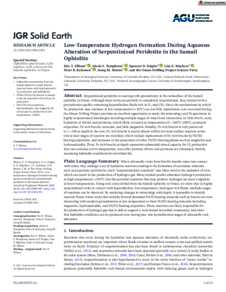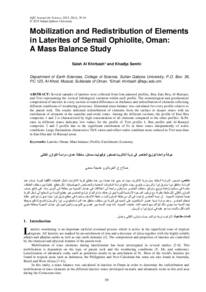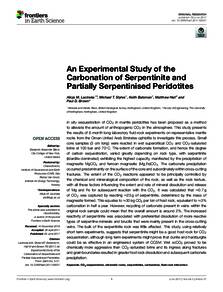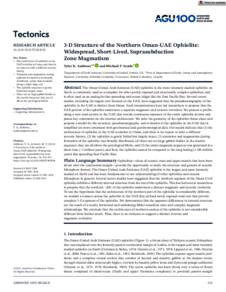Document
Low-temperature hydrogen formation during aqueous alteration of serpentinized peridotite in the Samail ophiolite.
Identifier
DOI: 10.1029/2021JB021981
Source
Journal of Geophysical Research: Solid Earth. v. 126, 6, e2021JB021981
Contributors
Templeton, Alexis S., Author
Zeigler, Spencer D., Author
Mayhew, Lisa E., Author
Kelemen, Peter B., Author
Matter, Juerg M., Author
Country
United States.
Publisher
John Wiley and Sons Inc.
Gregorian
2021-06-01
Language
English
Subject
English abstract
Serpentinized peridotite is reacting with groundwater in the subsurface of the Samail ophiolite in Oman. Although these rocks are partially to completely serpentinized, they interact with a groundwater aquifer containing hyperalkaline fluids rich in H2 and CH4. Since the mechanisms by which H2 production may continue at low temperatures (50°C) are not fully understood, core recovered during the Oman Drilling Project provides an excellent opportunity to study the mineralogy and Fe speciation in highly serpentinized harzburgite recording multiple stages of water/rock interaction. In Hole BA3A, early hydration of olivine and pyroxene, which likely occurred at temperatures of ∼100°C–200°C, produced serpentine, Fe-rich brucite, awaruite, and little magnetite. Notably, Fe-rich brucite is only preserved at >∼100 m depth in the core. Fe-rich brucite is nearly absent within two near-surface reaction zones where later stages of reaction are recorded, which include replacement of Fe-rich brucite by Fe(III)-bearing serpentine, and increases in the proportion of other Fe(III)-bearing phases such as magnetite and hydroandradite. Thus, Fe-rich brucite at depth represents substantial stored capacity for H2 production that can continue at low temperature, even after primary olivine and pyroxene are exhausted, thereby sustaining habitable conditions for microbial life.
ISSN
2169-9313
Category
Journal articles




